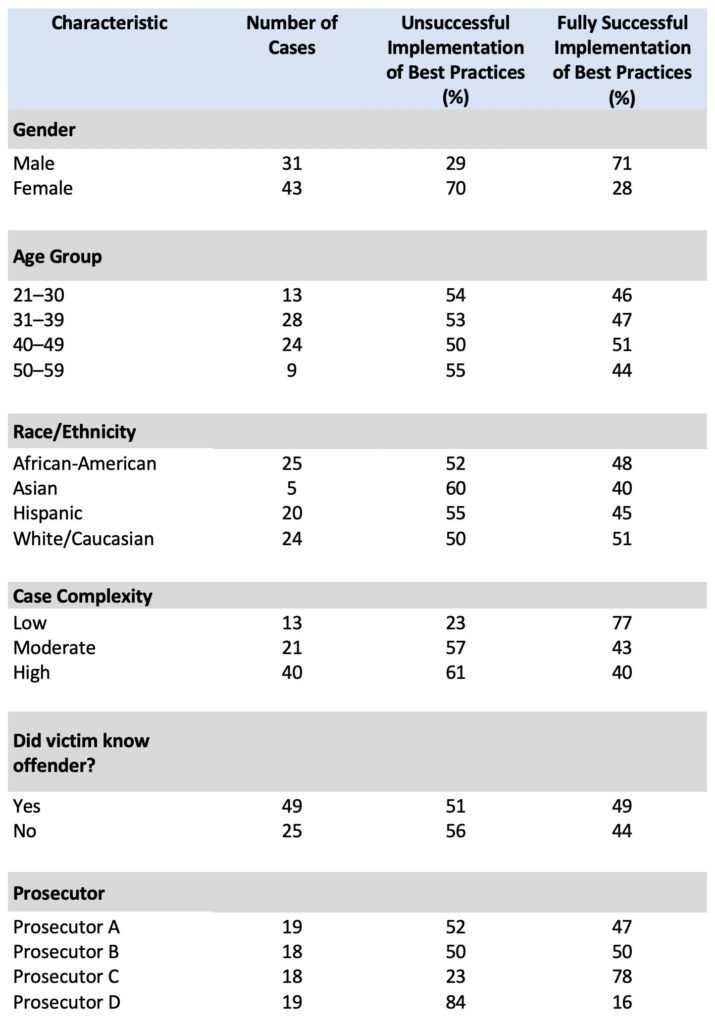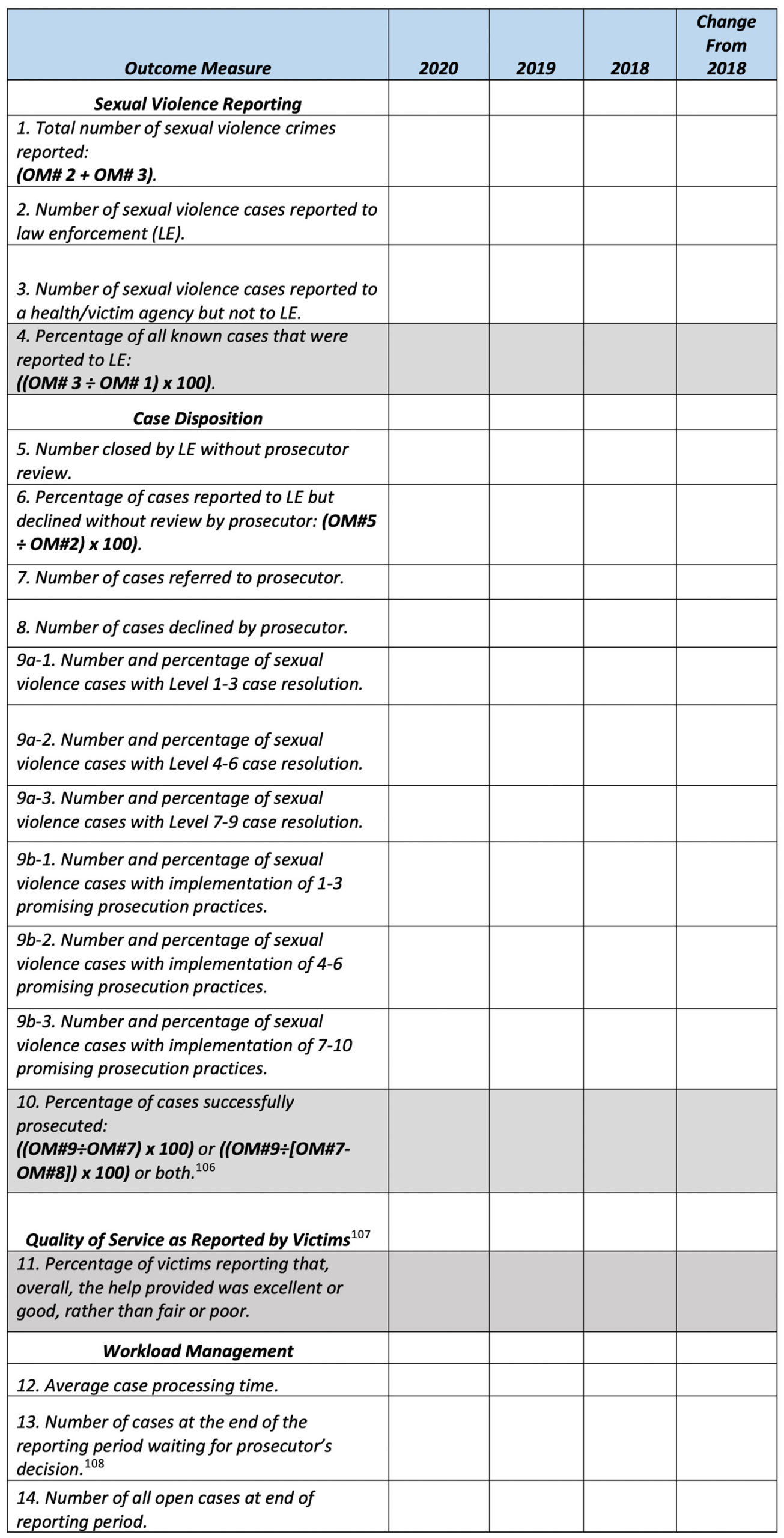Performance information should be reported to staff; partners; and ultimately, once performance management has been fully integrated into the office and sexual violence response system practice, the public.
All reports should convey the essential information clearly, and the format should be simple and easy to read. The reports should make use of descriptive labeling, visuals (like charts or graphs), and color (such as traffic-light colors identifying levels of success for each outcome measure). All of this can be accomplished with basic desktop publishing software.
Prosecutors’ offices and their partners should consider what information to report to the public. In the interest of transparency, much of the data described in this volume should be made publicly available.
Information about individual cases, of course, continues to be subject to considerations of victim privacy, confidentiality requirements, and rules of professional responsibility. Be sure that the reported data does not prematurely and inappropriately release information that might jeopardize individual cases. This might be of greater concern to smaller offices with smaller caseloads, where someone might easily identify a particular case based on specific pieces of data. Such identification might discourage a victim from continuing to participate in the criminal justice process or jeopardize the confidentiality of victims who participate in post-disposition surveys.


